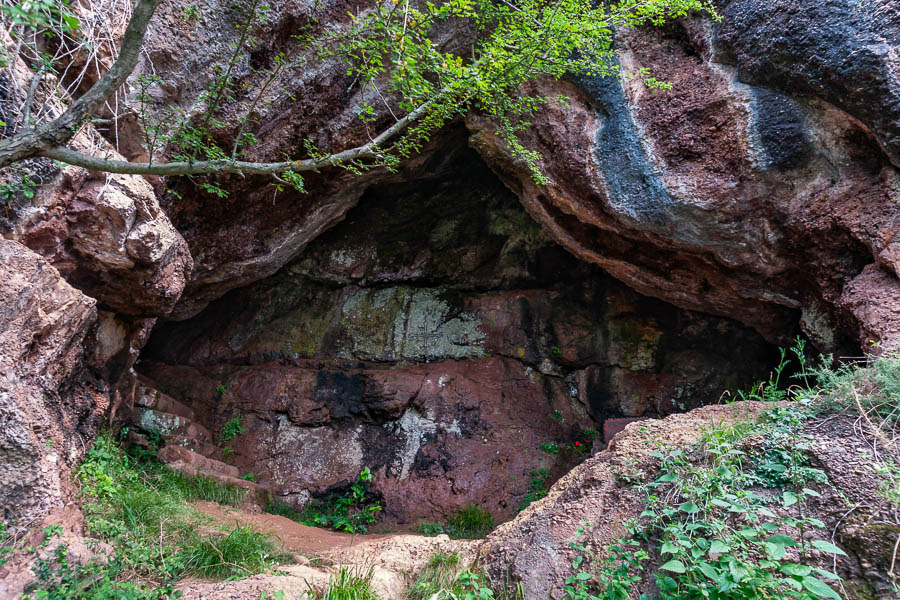
The cave is located on the edge of the GR10, at an altitude of 375 metres.
From the entrance, by a small staircase, one is surprised to find a considerable number of ex-votos, crosses, virgins, medals, coins, toys, bells, clothes, handkerchiefs...
Harpeko Saindua is a place of pilgrimage where an animistic type of worship is practiced - which attributes a soul to natural phenomena and objects - Christianized at the level of rites and practices.
To the left of the entrance is a narrow gallery, at the bottom of which is a limestone concretion, a 1.10m high stalagmite whose appearance is the source of a legend.
Legend, healings, pilgrimages
"A shepherdess was lost in the mountains.
Only his head was found.
For many years, voices were heard in the night.
Wait, wait, wait, wait, wait, wait, wait! Wait, wait, wait, wait, wait, wait, wait! Shouted someone in the mountain.
Once, at midnight, we saw a light come into this cave...
Some even saw twelve...
The inhabitants of the surrounding area went to the cave and found the statue of the "Saint" .
From that day on, there were no more voices... »
Even today, the belief in the healing virtues of this stalagmite is very strong. The believers rub their sick bodies or limbs with cloths soaked in the water collected from the concretion. This treatment would be particularly effective for skin (eczema) and eye diseases. The fact of leaving cloths, clothing or ex-voto is linked to the desire to leave in these places the illness that affects the person; this affection is thus materialized by the object that the person gets rid of.
There was a time when young people from the surrounding villages, Itxassou, Erratzu, Arizkun and Amaiur came on pilgrimage to Pentecost and the Trinity.
Bronze pieces from the last century were found in the crevice above the stalagmite. Nowadays, a multitude of coins, francs and pesetas are inserted in the crevices of the cavity walls.
Translated with www.DeepL.com/Translator (free version)




